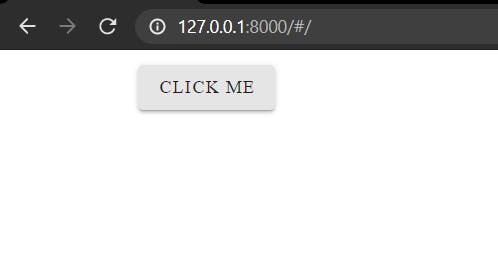Vuetify provides ready made components built with material design specifications. I will go over all the necessary steps to set up a Laravel project with Vue.js and Vuetify as a frontend.
First of all you need the following installed on your computer.
For this tutorial, I will name our project vuetivel. Let’s get started!
First open your terminal and create a new Laravel project called vuetivel and change the directory to the project folder.
$ laravel new vuetivel
$ cd vuetivel
Install a Laravel UI package to use Vuetify in your project.
$ composer require laravel/ui
Using the Laravel UI package also allows you to install the Laravel Authentication and Authorization presets.
After the Laravel UI package has been installed successfully, install a Vue scaffolding.
$ php artisan ui vue
$ npm install && npm run watch
The
npm run watchcommand will compile the components then watch the files and recompile automatically when you make any changes.
Consequently, install Vue-router and Vuetify plugins since they are not available in Laravel by default.
$ npm install vue-router vuetify
Since you will be using Vuetify, remove Bootstrap and jquery presets from the project by executing the following command.
$ npm uninstall bootstrap && jquery
Next, go to resources/sass/app.scss and replace bootstrap with Vuetify presets as follows.
//replace
@import url('https://fonts.googleapis.com/css?family=Nunito');
@import 'variables';
@import '~bootstrap/scss/bootstrap';
//with vuetify material design font and vuetify css file
@import url('https://fonts.googleapis.com/css?family=Roboto:100,300,400,500,700,900');
@import url('https://cdn.jsdelivr.net/npm/@mdi/font@4.x/css/materialdesignicons.min.css');
@import '~vuetify/dist/vuetify.css';
Now go to recources/js/bootstrap.js and remove the try-catch exception block and save the file.
//remove
try {
window.Popper = require('popper.js').default;
window.$ = window.jQuery = require('jquery');
require('bootstrap');
} catch (e) {}
Now that you have successfully installed all the packages and plug-ins we need. Your next step will be configuring Vue and Vuetify.
Go to your project folder resources/views/welcome.blade.php and replace the code with the one below.
<!DOCTYPE html>
<html lang="{{ str_replace('_', '-', app()->getLocale()) }}">
<head>
<meta charset="utf-8">
<meta name="viewport" content="width=device-width, initial-scale=1">
<link rel="stylesheet" href="{{asset('css/app.css')}}">
<title>Laravel</title>
</head>
<body>
<div id="app">
<example-component></example-component>
</div>
<script src="{{asset('js/app.js')}}"></script>
</body>
</html>
If you go to resources/js/app.js you see that Vue as been installed and available globally.
require('./bootstrap');
window.Vue = require('vue');
Go to recources/js folder and create vuetify.js and router.js files.
In the vuetify.js file copy and past the following code.
import Vue from 'vue';
import Vuetify from 'vuetify';
Vue.use(Vuetify)
export default new Vuetify({})
In the router.js file copy and past the following code.
import Vue from 'vue';
import VueRouter from 'vue-router';
Vue.use(VueRouter)
const routes = []
export default new VueRouter({routes})
The code above enables Vuetify and Vue-router in Vue.
The next step will be to import vuetify and vue-router and the Vue component to be used, in this case, use ExampleComponent.vue that comes pre-installed.
Go to recources/js/app.js and copy and past the code below.
require('./bootstrap');
window.Vue = require('vue');
import Vuetify from './vuetify'
import Router from './router';
import Example from './components/ExampleComponent'
Remove the code below since you have imported the ExampleComponent.vue component.
//remove
Vue.component('example-component', require('./components/ExampleComponent.vue').default);
Add Vuetify and Router to the Vue instance and add example-component as key and Example as value.
new Vue({
el: '#app',
Router,
Vuetify,
components:{
'example-component': Example
}
});
Importing a component and adding it to the Vue instance will make it available globally.
To test if Vuetify has been properly configured, go to recources/js/components/ExampleComponent.vue and replace the bootstrap code inside the <template> tag with a sample vuetify code snippent.
<template>
<v-container>
<v-btn>Click Me</v-btn>
</v-container>
</template>
Finally, serve your project to see your vuetify project in Laravel.
$ php artisan serve

If you see a Vuetify button, you have successfully added Vuetify to your Laravel project, Congrats!
Happy Coding!
